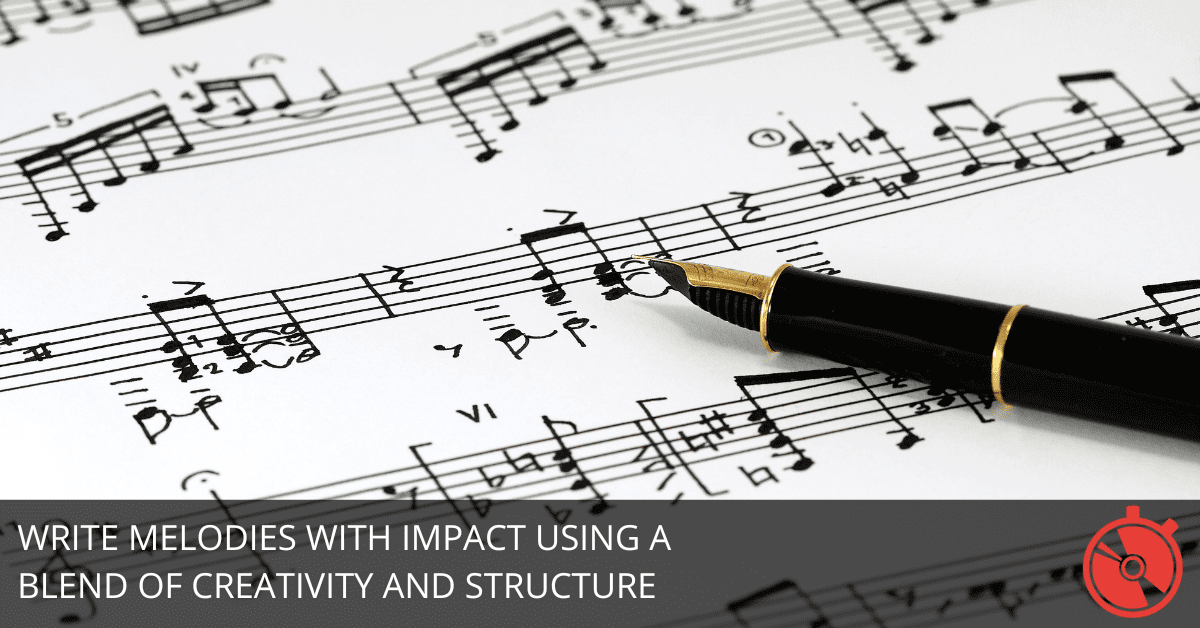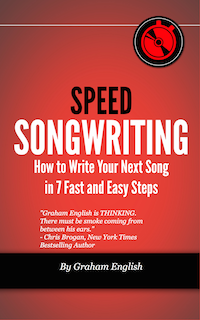
Writing a great melody is equal parts magic and method.
Sure, inspiration can strike like lightning, but relying on that alone is like waiting for rain in the desert—it might never come.
Craft, on the other hand, is a dependable well you can draw from every time you sit down to write.
Let’s break this process into four actionable techniques: balancing inspiration and craft, starting with rhythm, using chord progressions as your framework, and integrating lyrics seamlessly into your melody.
Inspiration vs. Craft: The Dynamic Duo
Melodies born from inspiration feel effortless. One minute, you’re sipping coffee, and the next, a tune is playing in your head.
But here’s the kicker: inspiration is unreliable. You can’t summon it on demand. That’s where craft comes in.
Think of crafting melodies like assembling IKEA furniture. You’ve got the tools and the blueprint—it’s about putting in the work. Start by humming random notes or playing scales on your instrument. If nothing clicks, don’t panic. Experimentation is the door through which inspiration often walks.
For example, try this exercise: hum a simple, three-note motif and repeat it. Then, tweak one note or change the rhythm. Suddenly, you’ve got variation—and variation is the heartbeat of memorable melodies.
The takeaway? Don’t sit around waiting for your muse. Build your melody like a carpenter: piece by piece, tweak by tweak. Sometimes, the grind uncovers brilliance that inspiration alone never could.
Start with Rhythm: Your Secret Weapon
Melodies don’t exist in a vacuum—they ride on the back of rhythm.
Before worrying about notes, focus on creating a compelling rhythmic pattern. Why? Because rhythm makes a melody stick in your head long after the song ends.
Here’s how to start: grab a metronome or a drum loop and tap out a rhythm. Keep it short—four to eight beats. Let’s say you tap out: “da-da-da-da rest da-da”. Now hum or sing notes over that rhythm. The magic lies in how your notes interact with those beats.
Take Bruno Mars’ “Uptown Funk” as an example. The vocal rhythm is punchy and syncopated: “Don’t believe me, just watch.” Strip away the notes, and the rhythm alone is unforgettable.
Once you’ve nailed a rhythm, experiment by shifting accents or adding syncopation. For instance, move the strong beat to an offbeat or replace straight quarter notes with a triplet feel. Rhythm-first melodies feel alive and dynamic, no matter how simple they are.
Chord Progressions: Your Melodic Compass
Chord progressions are like the bones of your song—they determine what kind of melody will fit.
A melody that feels natural over a C major chord might feel out of place over an A minor chord. By anchoring your melody to a chord progression, you ensure it complements the harmony.
Start by playing a simple progression. Let’s use C-G-Am-F as an example (a classic pop favorite). Sing or play notes that align with the chords’ strongest tones. For C major, try emphasizing C, E, or G. For A minor, lean into A, C, or E.
To add emotional depth, experiment with tension and release. For instance, start your melody on a less stable note (like D over a C major chord) and resolve it to a stable tone (C or E). This creates a sense of movement and resolution—essential for keeping listeners hooked.
Don’t let the chords box you in. If your melody wants to go somewhere unexpected, let it. If needed, adjust the chords to fit the melody instead of forcing the melody to conform. Great songwriting is a dialogue between melody and harmony.
Lyric Integration: Making Your Melody Speak
When your melody aligns with your lyrics, magic happens. The key is matching the natural stress of your words to the strong beats of your melody. Think of how you naturally emphasize certain syllables when speaking. Your melody should reflect that.
For example, take the phrase, “I’ll never let you go.” The natural stresses fall on “nev” and “go.” If your melody puts those syllables on weak beats, the phrase will feel awkward. Instead, place “nev” on a strong beat and let the melody rise on “go” for emotional impact.
Here’s an easy way to practice: write a short phrase, like “I’m running out of time.” Clap it out—“da DUM-da DUM da DUM.” Now, assign notes to match the rhythm. Keep it simple—three to five notes—and tweak as needed. By aligning the melody’s rhythm with the lyrical phrasing, you create something that feels effortless and intuitive.
Remember, your melody isn’t just a string of notes. It’s a vehicle for your lyrics, carrying their emotional weight to the listener. Whether your song is joyful, somber, or defiant, your melody should amplify that emotion.
Bringing It All Together
Writing melodies is about blending inspiration with structure, rhythm with harmony, and lyrics with emotion. Here’s a quick recap to put these techniques into action:
- Catch Inspiration: Start with simple motifs, and don’t overthink. Hum, noodle on an instrument, or improvise over chords.
- Harness Rhythm: Tap out a short pattern, then build your melody on top. Shift accents and try syncopation to add intrigue.
- Work with Chords: Anchor your melody to a progression, but let the melody lead if it wants to. Use tension and release to keep listeners engaged.
- Let Lyrics Guide You: Match syllable stresses to strong beats and ensure your melody amplifies the emotional message.
The best melodies aren’t born—they’re built. So pick up your instrument, grab a notebook, and start building. Because every great song starts with a melody—and every great melody starts with you.

Enter your first name and email address below and click “GET ACCESS NOW!” to get the Speed Songwriting Cheat Sheet delivered to your inbox!
We guarantee 100% privacy. Your information will not be shared.

Leave a Reply